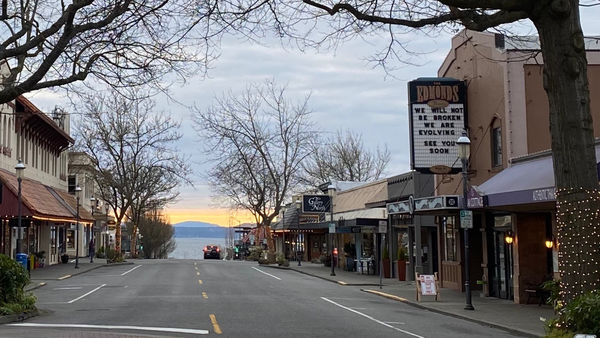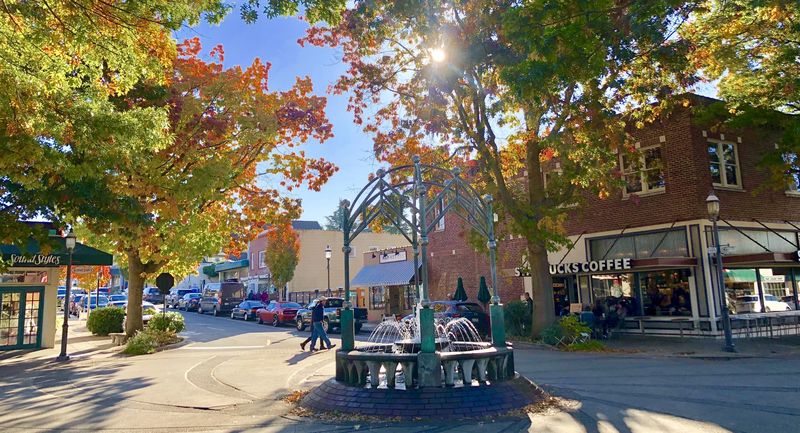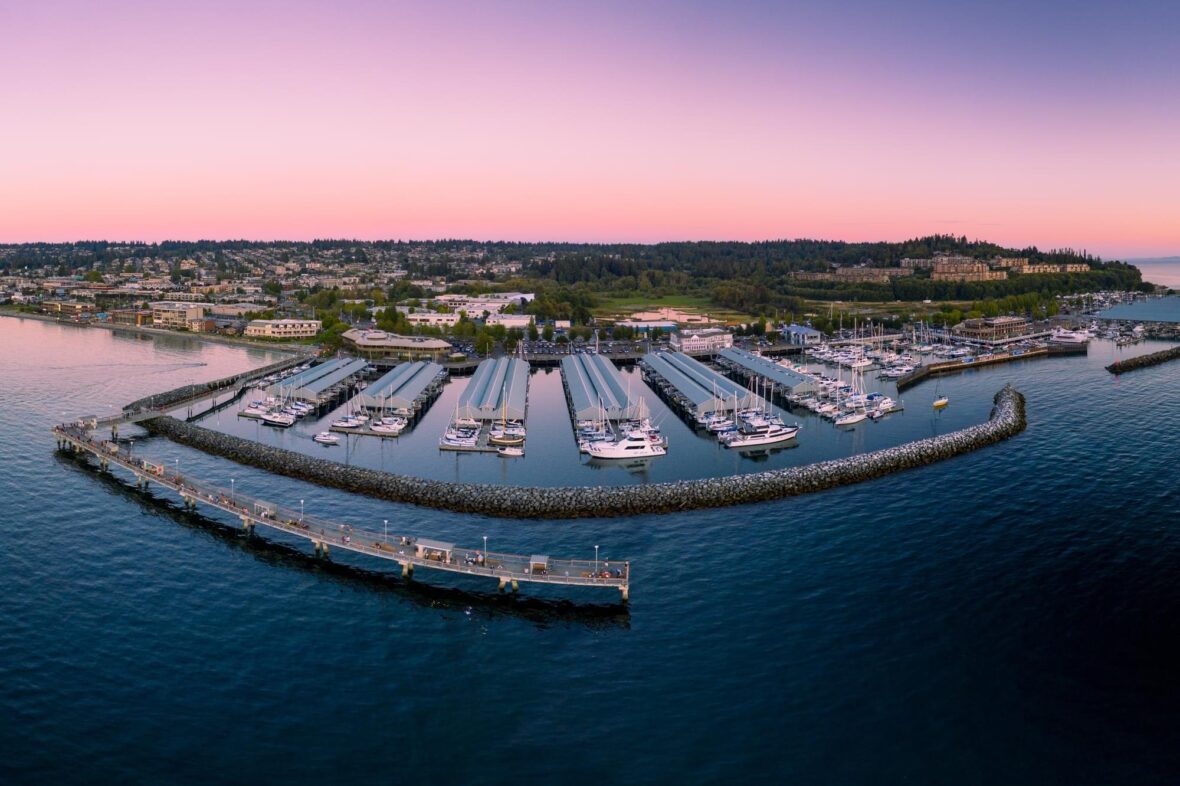Edmonds is a city in Snohomish County, Washington, United States. It is located in the southwest corner of the county, facing Puget Sound and the Olympic Mountains to the west. Take a look below for 30 fascinating and interesting facts about Edmonds, Washington, United States.
1. The city is part of the Seattle metropolitan area and is located 15 miles (24 km) north of Seattle and 18 miles (29 km) southwest of Everett.
2. With a population of 39,709 residents in the 2010 U.S. census, Edmonds is the third most populous city in the county.
3. The estimated population in 2019 was 42,605.
4. Edmonds was established in 1876 by logger George Brackett, who bought the land claim of an earlier settler.
5. It was incorporated as a city in 1890, shortly before the arrival of the Great Northern Railway. Early residents of the city were employed by the shingle mills and logging companies that operated in the area until the 1950s.
6. The hills surrounding Edmonds were developed into suburban bedroom communities in the mid-to-late 20th century and subsequently annexed into the city.
7. Edmonds is a regional hub for the arts, with museums, specialized facilities, and major annual festivals within the city’s downtown area.
8. The city is connected to nearby areas by two state highways and the state ferry system, which operates a ferry route to Kingston on the Kitsap Peninsula.
9. Public transit service in Edmonds is centered around the downtown train station, served by Amtrak and Sounder commuter trains, and includes several Community Transit bus routes that travel through outlying neighborhoods.
10. Prior to the 19th century, the Edmonds area was inhabited by the Suquamish tribe, who foraged and fished near the flat beach forming modern-day downtown.
11. No archaeological evidence of a permanent settlement in Edmonds has been found, despite claims that a fishing village had existed near the modern-day downtown.
12. An exploratory expedition of Puget Sound led by Charles Wilkes charted the Edmonds area in 1841, naming “Point Edmund” (now Point Edwards) to the southwest of the modern-day downtown.

13. A 147-acre (59 ha) land claim for the area was filed by Pleasant Ewell in 1866 and was sold to various landowners before being eventually purchased by Canadian-born logger George Brackett in 1872 for $650. Brackett had allegedly found the future site of Edmonds in 1870 while searching for potential logging areas on his canoe, which was blown ashore during a storm.
14. Brackett and his family moved from Ballard to Point Edmund in 1876, intent on creating a town. He drained a marshland near the waterfront and began logging the area, then known as “Brackett’s Landing”. Additional settlers arrived over the next few years, necessitating the construction of a wharf and general store by 1881.
15. In 1884, the settlement was platted and gained its first post office, christened with the name “Edmonds”, either a misspelling of Point Edmund or the name of George Franklin Edmunds, a U.S. Senator from Vermont who Brackett admired.
16. By the end of the decade, Edmonds had gained its first schoolhouse, sawmill, hotel, and drug store. The Town of Edmonds was formally incorporated as a fourth-class village of 600 acres (240 ha) on August 14, 1890, following an election by residents on August 7. To meet the minimum population of 300 residents required for incorporation, a popular legend states that Brackett added the names of his two oxen to the census conducted prior to the election.
17. Edmonds is the oldest incorporated city in Snohomish County. Brackett was elected as the town’s mayor for several months and the new town council passed ordinances to regulate or ban saloons, gambling establishments, and boarding houses.
18. The same year, Edmonds was selected as a stop on the Seattle and Montana Railroad (later absorbed into the Great Northern Railway), sparking interest from real estate investors. The Minneapolis Realty and Investment Company bought 455 acres (1.84 km2) of the townsite from Brackett for $36,000 and built a new hotel and wharf. The railway arrived in 1891, but failed to spark a land rush and the investment plan fell apart during the Panic of 1893, leaving Brackett to foreclose on the land.
19. Edmonds was supported by four shingle mills that prospered in the 1890s, along with an iron foundry that manufactured steel plates for shingles.
20. By 1908, the town had gained its own water system, electricity, paved streets, and telephone service.
21. In September 1908, Edmonds voted to become a third-class city, with a reported population of 1,546 residents. The city unsuccessfully lobbied for a branch of the interurban line from Everett to Seattle, which would have supplemented passenger steamships on the Mosquito fleet and passenger trains operated by Great Northern.
22. A major fire on July 8, 1909, destroyed one block of buildings on Main Street and caused $20,000 in damage. After the fire, the destroyed buildings were bought by a member of the city council, and replaced by a two-story concrete building.
23. The first automobile owned by an Edmonds resident arrived in 1911 and was followed by the completion of the North Trunk Road through modern-day Lynnwood. A branch road to Edmonds was completed in 1915 and stagecoach lines were extended to the city.
24. Automobile ferry service began in 1923, with the inauguration of the Kingston ferry, which would be acquired by the Puget Sound Navigation Company and continue to serve the city after the decline of the Mosquito fleet. During the 1920s, Edmonds expanded its wharf and ferry dock, while a site on the south end of the waterfront was acquired by the Union Oil Company (later Unocal) for the construction of an oil terminal in 1922.

25. A second major fire struck downtown Edmonds on April 11, 1928, damaging several buildings on the same block of Main Street as the 1909 fire. Despite the increasing scarcity of local timber, the sawmills on the Edmonds waterfront remained the city’s main industry in the 1920s.
26. During the Great Depression, all but two mills continued to operate and were supplemented by local improvement projects organized by the federal Works Progress Administration, including regraded streets, new parks, and the addition of an auditorium and sportsfields to the high school.
27. Edmonds’ sole entry on the National Register of Historic Places, the Carnegie Library, was added in 1973 and currently houses the Edmonds Historical Museum, a local museum operated by the Edmonds–South Snohomish County Historical Society.
28. The city government created its own historical commission in 2007 and now maintains a separate register of historic places with 18 buildings.
29. The city’s historic designation, unlike the national register, comes without design or building restrictions and primarily includes historic homes and businesses.
30. Edmonds is home to one general hospital, a branch of the Swedish Medical Center, which is located on State Route 99. It was established in 1964 and was run independently until the hospital was acquired by Swedish in 2010.




